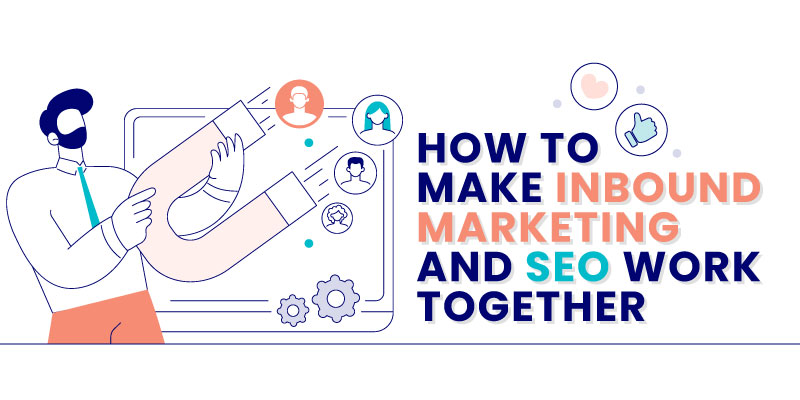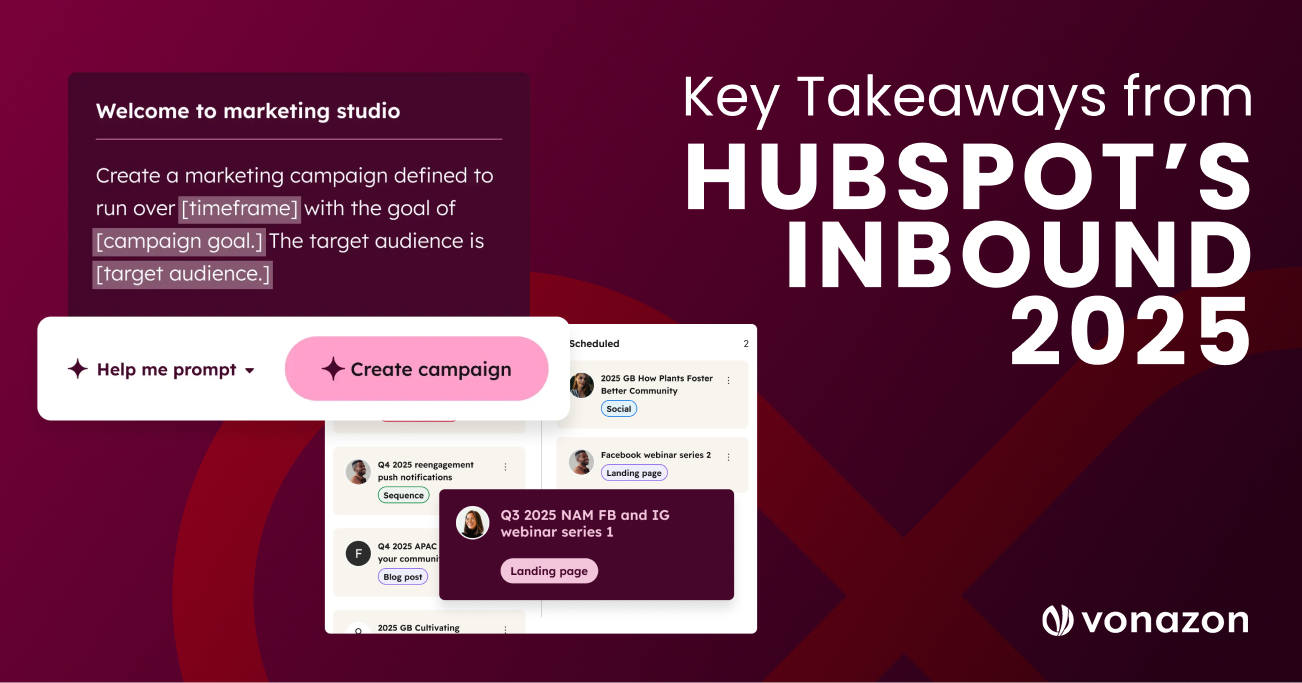How To Make Inbound Marketing and SEO Work Together
Businesses today are continually seeking strategies to attract, engage, and convert customers effectively. Two pivotal components in this endeavor are Inbound Marketing and SEO (Search Engine Optimization). When harmoniously integrated, these inbound marketing and SEO can significantly elevate a brand’s online presence, drive organic traffic, and foster sustainable growth.
Understanding Inbound Marketing
Inbound marketing is a business methodology that attracts customers by creating valuable content and experiences tailored to them. Unlike traditional outbound marketing, which interrupts your audience with content they may not want, inbound marketing forms connections they’re looking for and solves problems they already have.
1.
Content Creation:
Developing insightful and relevant content that addresses the needs and pain points of your target audience. This includes blogs, videos, infographics, and more.
2.
Social Media Engagement:
Utilizing platforms like Facebook, LinkedIn, and Twitter to share content, engage with your audience, and build a community around your brand.
3.
Lead Nurturing:
4.
Analytics and Optimization:
Increase in inbound links
Inbound marketing is not just a trend but a proven strategy. For instance, businesses that actively engage in blogging experience a substantial boost, acquiring a remarkable 97% increase in inbound links.
The Role of SEO in Inbound Marketing
Search Engine Optimization (SEO) is the practice of enhancing your website’s visibility on search engine results pages (SERPs). By optimizing various elements of your site, you increase the likelihood of attracting organic (non-paid) traffic.
1.
Keyword Research:
2.
On-Page Optimization:
3.
Technical SEO:
Improving the technical aspects of your website, such as site speed, mobile-friendliness, and secure connections (HTTPS).
4.
Backlink Building:
Acquiring high-quality inbound links from reputable websites to enhance your site’s authority and trustworthiness.
The significance of SEO is evident, with 68% of online experiences beginning with a search engine.
Furthermore, 61% of marketers agree that improving SEO and growing their organic presence is their top inbound marketing priority.
Integrating Inbound Marketing and SEO
When inbound marketing and SEO work together, they help businesses attract, engage, and convert their target audience more effectively. A key component of this integration is content creation, which serves as the foundation for both inbound marketing and SEO success.
High-quality, SEO-optimized content plays a crucial role in addressing audience queries while ensuring visibility on search engines. By developing content that directly responds to the needs and interests of potential customers, businesses can improve their search rankings and attract organic traffic.

Blogging, for example, is a highly effective method of content creation.
Companies that consistently produce valuable content experience six times more conversions than those that do not. This demonstrates that a well-maintained blog can significantly contribute to lead generation and customer acquisition.
Beyond written content, visual elements also play a major role in engagement.
Research shows that content with relevant images receives 94% more views than content without visuals. This highlights the importance of incorporating eye-catching graphics, infographics, and multimedia elements to enhance user experience and encourage interaction.

Optimized content not only ranks higher in search results but also ensures that the right audience finds and engages with it. This strategic alignment creates a seamless experience for potential customers, driving higher levels of engagement and ultimately increasing conversions.
Benefits of Combining Inbound Marketing and SEO
Bringing together inbound marketing and SEO offers a range of benefits that can help businesses grow sustainably while maximizing their digital marketing efforts. From increasing brand visibility to reducing costs, this strategic approach allows companies to attract and convert their ideal audience more effectively.
Increased Visibility
One of the most significant advantages of combining inbound marketing with SEO is improving your online visibility. By creating high-quality content that is optimized for search engines, businesses improve their chances of appearing in relevant searches. When your website consistently ranks for industry-specific keywords, it becomes easier for potential customers to find you.
Cost-Effectiveness
Unlike paid advertising, which requires ongoing investment to maintain visibility, inbound marketing and SEO offer long-term cost savings. Research shows that inbound marketing costs 62% less per lead than traditional outbound marketing. Instead of spending large sums on ads, businesses can focus on creating content that continuously attracts and nurtures leads over time.
Heightened Credibility
Ranking high on search engine results pages does more than just increase traffic, it also builds trust with your audience. People tend to view the top search results as the most reliable and authoritative sources of information. By consistently appearing at the top of search results, businesses reinforce their expertise and credibility within their industry.
Sustainable Traffic
Unlike paid campaigns, which stop generating traffic once the budget runs out, inbound marketing and SEO drive sustainable, long-term results. A well-executed SEO strategy ensures that your content remains discoverable for months or even years after publication.
As search engines continue to index and rank your content, it maintains its ability to attract new visitors without requiring additional investment.
Implementing an Effective Strategy
To harness the full potential of inbound marketing and SEO, consider the following steps:
1.
Develop a Content Strategy
A strong content strategy starts with understanding your audience. Identify their pain points, challenges, and frequently asked questions, then create content that directly addresses these topics. Conduct thorough keyword research to ensure your content aligns with what your audience is actively searching for online.
Beyond keyword alignment, diversify your content formats to appeal to different audience preferences. Blog posts, infographics, videos, case studies, and interactive tools can all play a role in engaging users.
2.
Optimize Your Website
Even the best content won’t be effective if your website isn’t optimized for performance. A slow, poorly structured, or non-mobile-friendly site can drive visitors away before they even consume your content. Focus on technical SEO to ensure fast load times, seamless mobile experiences, and secure browsing with HTTPS encryption.
In addition, apply on-page SEO best practices to help search engines understand your content. This includes optimizing:
- Meta titles and descriptions for keyword relevance and click-through rates.
- Header tags (H1, H2, H3, etc.) to structure content logically.
- Alt text for images to improve accessibility and search rankings.
- Internal linking to guide users through related content and improve site navigation.
A well-optimized website improves both user experience and search engine visibility, increasing the chances of ranking higher in search results.
3.
Leverage Social Media
Social media plays a key role in distributing content and driving traffic back to your website. Sharing blog posts, videos, and infographics on platforms like LinkedIn, Twitter, Facebook, and Instagram increases content reach and encourages audience interaction.
Engagement on social media signals relevance and popularity, which can lead to more shares, backlinks, and referral traffic – all of which positively impact SEO. Encouraging discussions, responding to comments, and running interactive campaigns (such as polls or Q&A sessions) further boost visibility and strengthen brand credibility.
Consistency is key when leveraging social media. Develop a posting schedule and use social media automation tools to maintain a steady presence across platforms.
4.
Monitor and Analyze Performance
To continuously improve your inbound marketing and SEO efforts, data-driven decision-making is essential. Tracking performance metrics allows you to refine strategies, optimize content, and maximize results.
Use analytics tools like Google Analytics or HubSpot to track key indicators, including:
- Organic Traffic: Measure how many visitors find your website through search engines.
- Engagement Rates: Monitor bounce rates, time on page, and click-through rates to assess how well content resonates with users.
- Conversion Rates: Identify which content or landing pages are leading to form submissions, demo requests, or purchases.
Regularly analyzing these insights helps you identify what’s working and what needs improvement. For instance, if a blog post is attracting significant traffic but has a high bounce rate, it may need better structuring or stronger calls to action.
The Future of Inbound Marketing and SEO
As search engine algorithms evolve and consumer behavior shifts, the integration of inbound marketing and SEO will become even more critical. Businesses that prioritize high-quality content, user experience, and data-driven optimization will have a competitive edge in attracting and converting leads.
By combining these strategies, you increase visibility, build trust, and drive sustainable growth, all while reducing reliance on costly outbound marketing tactics.
we're ready to help!
At Vonazon, we help businesses strategically align inbound marketing and SEO to maximize results. Whether you need content marketing, technical SEO improvements, or a full inbound strategy, our team is ready to help.






